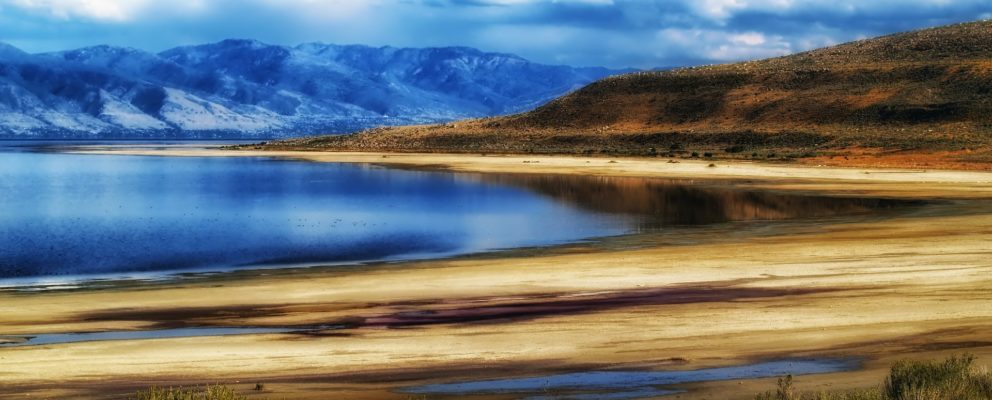Innovative markets could protect the world’s endangered saline lakes on the cheap.
By Eric C. Edwards, CEnREP Affiliate and Assistant Professor in the Department of Agricultural and Resource Economics
Not all rivers lead to the sea. In some of the world’s most water-scarce regions, rivers terminate in large, generally shallow lakes. These saline lakes are shrinking due to human water diversions.
Great Salt Lake (GSL) in Utah is the largest saline lake in the US and fourth largest in the world. It provides a wide range of benefits including tourism, mineral extraction, brine shrimp production, and wetland habitat. However, these services are threatened.
Diversions from tributary rivers for agricultural and municipal water supply have caused lake levels to decline during the last century, with total volume reduced by 48%. As lakebed is exposed, contaminants as well as particulate matter enter the atmosphere and cause respiratory illness and other public health problems.
Solutions are not easy because of the importance of the diverted water to the economy of Utah. In a recent piece I published with Dr. Sarah Null in Science of the Total Environment, we estimate the cost of protecting the lake.
One method is to equally cut back all Utahns currently diverting water. To maintain fully functioning ecosystems, previous hydrologic studies suggest all users would need to reduce use by 42%. But how much would this cost?
To answer this question, we first need to find a way to estimate the value of the water to the economy. We use water conservation measures as a proxy for this cost, assuming that to make 42% cuts, users could implement various types of water conservation. Farmers could switch irrigation techniques; homeowners and schools could water their lawns at night.
By ordering these water conservation measures from cheapest to most expensive, we can estimate the cost of a cutback. Small cutbacks are the cheapest, while large ones require more expensive conservation measures, like converting lawns to low-water landscaping.
Our initial findings suggest the cost of cutbacks to all users of 42% would cost $37.4 million. However, with uniform cutbacks some users pay a lot to conserve water and some pay a little. Users who pay a lot might be willing to pay other users to conserve instead of them.
The result of allowing cutbacks to be transferred between users is the same amount of water use reduction, but at a lower cost. This creates a win-win scenario where everyone is better off and the lake is still protected. We estimate that allowing these types of transfers can reduce costs by 22-57%.
This type of market is referred to as cap-and-trade. The cap is the restriction on total water diversions, and the trade allows individuals to make decisions on whether to conserve or pay for others to conserve instead.
 The figure illustrates the general approach and results. On the left side, potential water conservation costs are shown for GSL’s tributary basins (plus upper and lower bounds). The right side shows the cost of three scenarios: uniform cutbacks, cutback trades within a basin, and cutback trades across basins. Because all three basins flow to the same lake (see map), a 15% inflow increase is achieved in all scenarios, but at different costs.
The figure illustrates the general approach and results. On the left side, potential water conservation costs are shown for GSL’s tributary basins (plus upper and lower bounds). The right side shows the cost of three scenarios: uniform cutbacks, cutback trades within a basin, and cutback trades across basins. Because all three basins flow to the same lake (see map), a 15% inflow increase is achieved in all scenarios, but at different costs.
Our results suggest cap-and-trade in water conservation offers an opportunity to protect saline lake ecosystems at lower costs. However, in Utah such an approach is not feasible under current water rules, as there is no legal requirement for dedicated water to GSL, and thus no ability to cap use.
One potential solution would be to allow “environmental transfers,” sales from current diverters to parties who do not divert but instead allow their water to flow directly to the lake. Currently, Utah’s experience in these transfer is limited because they can only be enacted by the Division of Wildlife Resources. However, tweaks in the law that allow these transfers have been brought up by Utah legislators.
While there is much work to be done, our research suggests that protecting ecosystems and the Utah economy can be done today at a fairly low cost. As Utah’s population continues to grow and GSL levels continue to fall, cost estimates are likely to rise.
